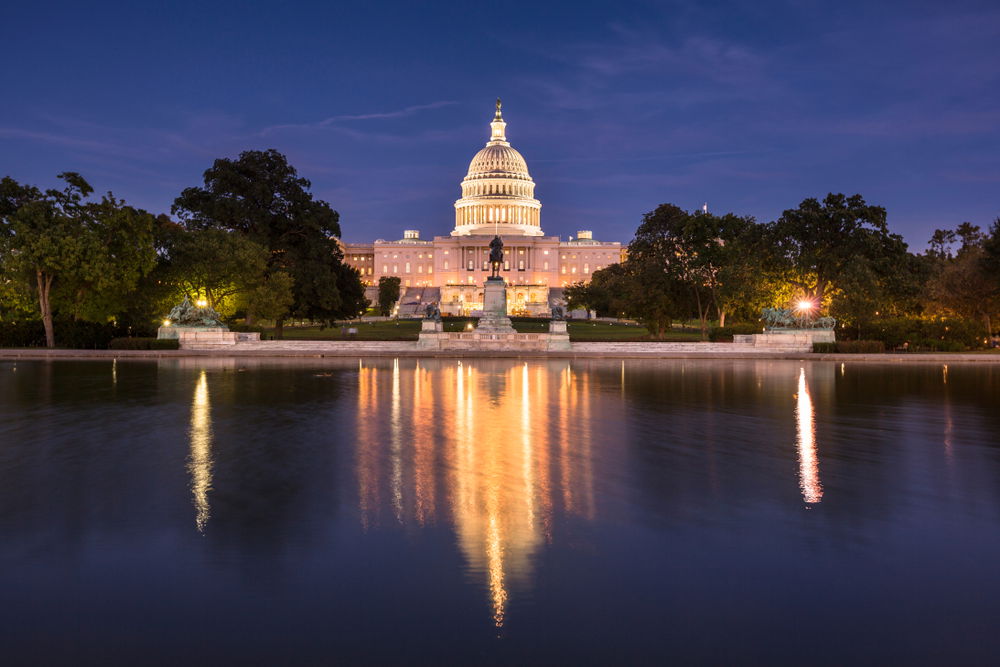Highlights
- The Indian Child Welfare Act has relevance beyond its four corners and is a flashpoint for examining the role of culture and race in connection to adoption. Post This
- It's unlikely the Supreme Court will overturn ICWA. Instead, it's more likely that a child-centric foster care and adoption regime will continue to attempt to balance the goods of a stable home with the goods of biological connection. Post This
At a time when identity politics is front and center, it is not surprising that interracial adoption continues to be a sensitive matter of debate. One aspect that is gaining attention as it makes it way through the federal courts involves the adoption of Native American children. Such adoptions are uniquely governed by the Indian Child Welfare Act (ICWA) and are the subject of a few controversies.
ICWA is a federal law enacted in 1978 in response to evidence regarding the very high rate of placement of Native American children in non-Native homes. The act, further described below, mandates that state child welfare administrators and judges strongly prefer preserving a Native American child’s connections with his or her family and tribe when executing an adoption. The law also has procedural and jurisdictional requirements recognizing the authority of Native American tribes over the welfare of Native children. Ordinarily, child welfare—including foster care and adoption rules—are matters for state courts’ jurisdiction.
Weeks ago, however, a federal district court in Texas struck down ICWA as unconstitutional in a case involving (among others) a two-year-old Native American boy whose father was an enrolled member of the Cherokee Nation, and whose adoption by a non-Native couple was supported by both his biological parents. Because of ICWA, however, his adoption decree was nevertheless subject to “collateral attack” (possible reversal) for two years by the boy’s biological family or the tribe. The court’s opinion in Brackeen v. Zinke held that ICWA is based upon a racial classification and that the government did not adequately demonstrate the “compelling interests” constitutionally required to justify line-drawing based upon race. The case was quickly appealed to the Fifth Circuit Court of Appeals, which will likely issue a ruling in 2019. It may eventually be appealed to the U.S. Supreme Court.
Whenever ICWA is back in the spotlight, it provokes additional discussions about the wisdom of race- or culture-matching in adoption. Some African American advocates, in particular, challenge the fairness of the act when there is no “African American Child Welfare Act.” Furthermore, child welfare authorities feel caught between two competing difficulties. The first is the notable overrepresentation of African- and Native-American children in foster care and the need simply to find them homes that are safe and stable, period. The second is the social and cultural tragedy of minority communities’ separation from large numbers of their own children, and the additional possibility that these children will experience dislocation or worse.
In short, ICWA has relevance beyond its four corners and is a flashpoint for examining the role of culture and race in connection to adoption. In order to explore these issues, I will briefly describe the context in which ICWA was enacted. Then, I will consider current challenges to its constitutionality. Finally, I will articulate a persistent claim that African Americans merit similar treatment, and discuss a middle ground proposed by some adoption specialists.
The Indian Child Welfare Act
ICWA was enacted in response to overwhelming evidence that for many decades, Native American children had been removed from their families of origin, sometimes forcibly and without evidence of neglect, and often on the basis of racist ideas about Native cultures and parenting. Hearings conducted prior to the passage of ICWA reported that over 25% of all Native American children in the U.S. were not living with their families but rather in institutions, or with foster or adoptive parents who were not Native American for the most part.
ICWA, therefore, mandated that states exercise robust preferences for reuniting Native children with their biological families, beginning with the nuclear family, but also reaching to the extended family. If the extended family is not available, the state must prefer other members of their tribe, and if they are not available, other Native American families. The law also required proceedings regarding a Native American child’s custody to take place in the relevant tribal court, absent good cause to do otherwise. In actions concerning foster care or the termination of parental rights, the child’s tribe retains the authority to intervene at any point. Furthermore, the evidentiary standard for terminating a parent’s right is higher than usually applied in such proceedings, and even a final decree placing a child with an adopting family is subject to collateral attack for twice the length of time many states permit.
The Debate
Supporters of ICWA insist that the statute is primarily a recognition of the political deference owed to sovereign tribes, even as it also encourages the maintenance of racial and cultural ties. There is a great deal of evidence to support this interpretation, not only in the history of the act, but also in various Supreme Court opinions describing the rationale for ICWA, and other federal government efforts to support Native American tribes. If the statute is interpreted this way (i.e. drawing political lines), it is very easy for it to satisfy constitutional scrutiny: it need only to bear a “rational relationship to a legitimate state interest.” The federal government’s interest in correcting longstanding abuses of Native American tribes’ authority and welfare easily satisfies this test.
On the other hand, as opponents suggest and as a federal court stated in Brackeen, ICWA regularly refers to the blood ancestry of Native American children when identifying the children who trigger the statute’s requirements. In short, they claim that the law establishes racial categories and treats people differently based upon the category they occupy. Such laws are unconstitutional unless the state can demonstrate that they are supported by “compelling” state interests, narrowly tailored to achieve the state’s goals. In Brackeen, the state did not attempt to demonstrate such interests. And the court deemed the state interests they did mention—i.e. Congress’ unique obligations to Native Americans, and maintaining children’s relationship with their tribe—to be insufficient. This was because the act contemplated placing children with tribes other than their own, and with family members who might not be tribal members. Furthermore, the act applied to children who were not and may never be members of a tribe.
Thus far, the U.S. Supreme Court has refused to hear a case directly challenging the constitutionality of ICWA (it has refused two such cases, in 2017 and 2018). And were the Brackeen decision to be appealed there in 2019, there is no guarantee that the Court would take it.
But questions about giving preference to cultural and ancestral ties solely in the case of Native American children persist. African American critics, for example, while recognizing the disturbing treatment of Native Americans in the U.S., point out the terrible and unjustifiable sufferings of African Americans. They also point to literature claiming positive benefits of boosting children’s pride in their ethnic and racial heritage, and the negative sense of dislocation experienced by children separated from their ancestral communities.
The federal government has swung back and forth on this question outside of the Native American context. Its position is complicated by the fact that all entities receiving federal money are governed by a civil rights provision banning discrimination on the basis of race, color, and national origin. In response to large numbers of foster children waiting to be adopted, the 1994 Multiethnic Placement Act (MEPA) prohibited the delay or denial of adoption solely on the basis of race, color, or national origin. Then, in 1996, in response to calls to remove even more barriers to transracial adoption, Congress passed the Removal of Barriers to Interethnic Adoption Provisions, to amend the MEPA. It removed the word “solely” from the above-quoted provision, and substituted language banishing race from consideration—except in rare situations.
A Middle-Ground
A comprehensive report by a well-known adoption think tank recommends a middle ground on the question of the roles of race and ethnicity in adoption. It provides evidence that transracially adopted children may well struggle more with their adjustment and in the development of a positive racial identity. This would indicate, they argue, that adoption should not be “color-blind” entirely. Rather, in addition to recruiting more minority families to consider adoption, they recommend that adoption services should also incorporate materials preparing families for the particular challenges of interracial adoption and helping them facilitate their children’s comfort with their own heritage. Interestingly, it appears that, in practice, adoption services continue to take race and ethnicity into account, despite the language of the MEPA, as amended.
It seems rather unlikely that the Supreme Court will overturn ICWA or that Congress will repeal it. It also seems unlikely that a law will emerge that as strongly favors the racial or ethnic matching of children generally. Imagine, for example, the potential consequences for an already overwhelmed foster care and adoption system, or even the consequences for the new reproductive technologies industry, wherein many individuals and couples use donor gametes or embryos that possess particular ethnic or racial backgrounds. Like children created via new reproductive technologies, many of the children covered by ICWA have never known their tribe or culture or a Native American family life. Nevertheless, the law requires a preference for their placement with adults sharing their genetic heritage.
Instead, it seems more likely that a child-centric foster care and adoption regime will continue to walk the difficult path of attempting to balance the goods of a stable home with the goods of biological connection and ethnic/racial sensitivity and pride.
Helen Alvare’ is a Professor of Law at George Mason University School of Law and the author of Putting Children’s Interests First in U.S. Family Law and Policy: With Power Comes Responsibility.












